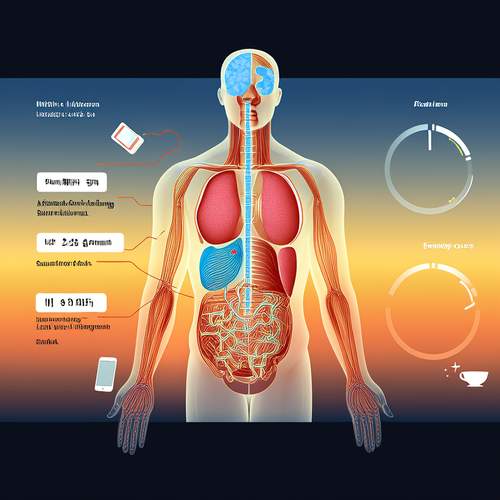The world of sports has undergone a seismic shift in recent years, driven by the explosive growth of data analytics. What was once a domain ruled by gut instincts and subjective observations has now become a playground for statisticians, computer scientists, and sports strategists. The marriage between athletics and data science has birthed an entirely new approach to understanding performance, predicting outcomes, and gaining competitive advantages that were previously unimaginable.
From the early days of basic statistics like batting averages in baseball or shooting percentages in basketball, sports analytics has evolved into a sophisticated discipline. Modern systems now track every conceivable metric - from player movement patterns measured in millimeters to biometric data revealing an athlete's physiological state in real-time. Teams across all major leagues employ dedicated analytics departments, using proprietary algorithms to parse through terabytes of data for that elusive edge over competitors.
The impact extends far beyond professional sports. Amateur athletes now have access to wearable technology that provides performance feedback once reserved for Olympians. Fantasy sports enthusiasts pore over advanced metrics to draft their teams, while broadcasters use predictive models to enhance viewer engagement during live events. This democratization of sports data has created a cultural shift in how we consume and understand athletic competition at every level.
One of the most fascinating developments has been the application of machine learning to injury prevention. By analyzing movement patterns and workload data, teams can now identify athletes at risk of specific injuries before symptoms appear. This proactive approach to player health has revolutionized sports medicine, potentially extending careers and saving organizations millions in lost productivity. The same technology helps in rehabilitation, creating personalized recovery programs based on how similar athletes responded to various treatments.
In-game strategy has been completely transformed by data analytics. Baseball's defensive shifts, basketball's three-point revolution, and soccer's pressing systems all stem from insights gleaned from massive datasets. Coaches who once relied on intuition now make decisions supported by probabilities calculated from thousands of historical similar situations. The clipboard and dry-erase board have given way to tablets displaying real-time analytics during timeouts.
Player evaluation and recruitment represent another area where analytics has disrupted traditional approaches. The "moneyball" phenomenon first popularized in baseball has spread to every sport, with teams developing complex valuation models to identify undervalued talent. These systems consider not just conventional stats but hundreds of micro-indicators that correlate with future success. The result has been a dramatic shift in how organizations allocate their financial resources and construct their rosters.
The business side of sports has equally benefited from data analysis. Stadiums use dynamic pricing models that adjust ticket costs in real-time based on demand patterns. Concession stands optimize menus and placement using heat maps of fan movement. Marketing departments personalize outreach campaigns by analyzing fan behavior across digital platforms. Even broadcast rights negotiations now incorporate sophisticated viewership predictions.
As the technology continues advancing, we're seeing the emergence of entirely new metrics that redefine how we assess performance. In basketball, "gravity score" measures how a player's presence affects defensive positioning regardless of whether they touch the ball. Soccer analysts track "expected threat" to quantify how much a pass increases the likelihood of scoring. These next-generation statistics provide insights that traditional box scores could never capture.
Ethical questions have emerged alongside these technological advancements. The extensive data collection raises privacy concerns, particularly regarding biometric information. There's ongoing debate about how much decision-making should be delegated to algorithms versus human judgment. Some purists argue that over-reliance on analytics removes the human element that makes sports compelling. These discussions will likely intensify as the technology becomes more pervasive.
The future of sports analytics points toward even greater integration of artificial intelligence and immersive technologies. Imagine augmented reality systems that allow coaches to visualize different strategies in real-time during games, or neural networks that can simulate how rule changes might affect the style of play. The line between physical and digital sports environments will continue blurring, creating new opportunities and challenges for athletes, organizations, and fans alike.
What remains clear is that data analytics has become an inseparable part of modern sports. It has enhanced how we play, coach, manage, and experience athletic competition. While the romantic notion of sports as purely human drama persists, the reality is that numbers now shape that drama in profound ways. The organizations and individuals who master this intersection of athletics and analytics will define the next era of sports excellence.

By /May 21, 2025

By /May 21, 2025

By /May 21, 2025

By /May 21, 2025

By /May 21, 2025

By /May 21, 2025

By /May 21, 2025

By /May 21, 2025

By /May 21, 2025

By /May 21, 2025

By /May 21, 2025

By /May 21, 2025

By /May 21, 2025

By /May 21, 2025

By /May 21, 2025

By /May 21, 2025

By /May 21, 2025

By /May 21, 2025

By /May 21, 2025

By /May 21, 2025